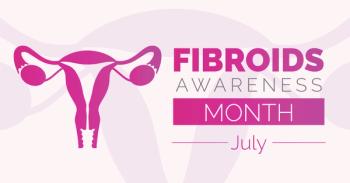
Uterine artery embolization versus myomectomy to treat uterine fibroids
Women with symptomatic uterine fibroids achieved a greater improvement in quality of life with myomectomy than with uterine artery embolization (UAE), according to a randomized study published in the journal Health Technology Assessment.
The differences in costs and quality-adjusted life-years (QALYs) were minimal.
The study, known as the FEMME trial (treating Fibroids with either Embolisation or Myomectomy to Measure the Effect on quality of life among women wishing to avoid hysterectomy) assessed the effect of the 2 interventions on quality of life at 6 months and at 1, 2 and 4 years.1
The study, along with a parallel economic evaluation, was conducted at 29 hospitals in the United Kingdom between February 2012 and May 2015.
A total of 254 premenopausal women who had symptomatic uterine fibroids amenable to the 2 procedures were equally randomized to myomectomy (n = 127, of whom 105 underwent the procedure) or UAE (n = 127, of whom 98 underwent the procedure).
Myomectomy could be open abdominal, laparoscopic or hysteroscopic, whereas embolization of the uterine arteries was performed under fluoroscopic guidance.
The primary outcome was the Uterine Fibroid Symptom Quality of Life (UFS-QOL) questionnaire (scores ranging from 0 to 100; a higher score indicating better quality of life) at 2 years, adjusted for baseline score.
The economic evaluation estimated QALYs, derived from EuroQol-5 Dimensions, three-level version; and costs from the National Health Service (NHS) perspective.
The UFS-QOL questionnaire scores at 2 years were 84.6 (standard deviation 21.5) in the myomectomy group and 80.0 (standard deviation 22.0) in the UAE group.
The intention-to-treat complete-case analysis revealed a mean adjusted difference of 8.0: 95% confidence interval (CI): 1.8 to 14.1 (P = 0.01).
The mean adjusted difference using multiple imputation for missing responses was 6.5; 95% CI: 1.1 to 11.9. The mean difference in the primary outcome at 4-year follow-up was 5.0, in favor of myomectomy: 95% CI: –1.4 to 11.5 (P = 0.13).
The incidences of perioperative and postoperative complications from all initial procedures were similar for both groups: 29% in the myomectomy group vs. 24% in the UAE group.
Overall, 12 women in the UAE group and 6 women in the myomectomy group reported pregnancies over 4 years, resulting in seven and 5 live births, respectively, for a hazard ratio of 0.48; 95% CI: 0.18 to 1.28.
Economically, over the first 2 years, UAE was linked to higher costs than myomectomy: a mean cost of £7,958 vs. £7,314, respectively.
However, there were fewer QALYs gained with myomectomy: 0.74 vs. 0,83 for UAE. The differences in costs of £645 and QALYs of -0.09 were small. Comparable results were observed over the full 4 years.
At a threshold of willingness to pay £20,000 for a gain of 1 QALY, the likelihood of myomectomy being cost-effective at 2 years is 98% and at 4 years 96%.
A limitation of the study is that many women were not recruited because of their preference for a particular treatment option. “Future research should involve women who are desiring pregnancy,” wrote the authors.
Reference
Daniels J, Middleton LJ, Cheed V, et al. Uterine artery embolisation versus myomectomy for premenopausal women with uterine fibroids wishing to avoid hysterectomy: the FEMME RCT. Health Technol Assess. 2022. Volume 26, No. 22. doi:10.3310/ZDEG6110
Newsletter
Get the latest clinical updates, case studies, and expert commentary in obstetric and gynecologic care. Sign up now to stay informed.











